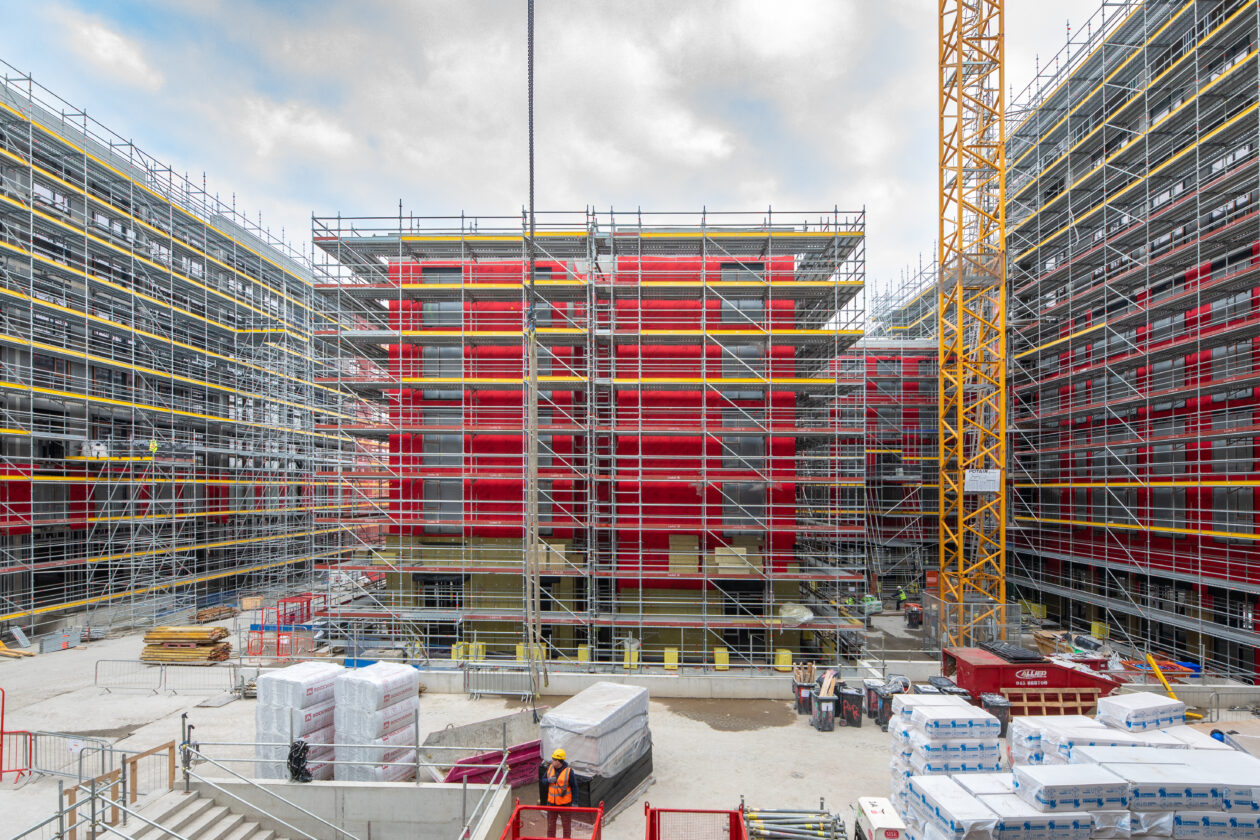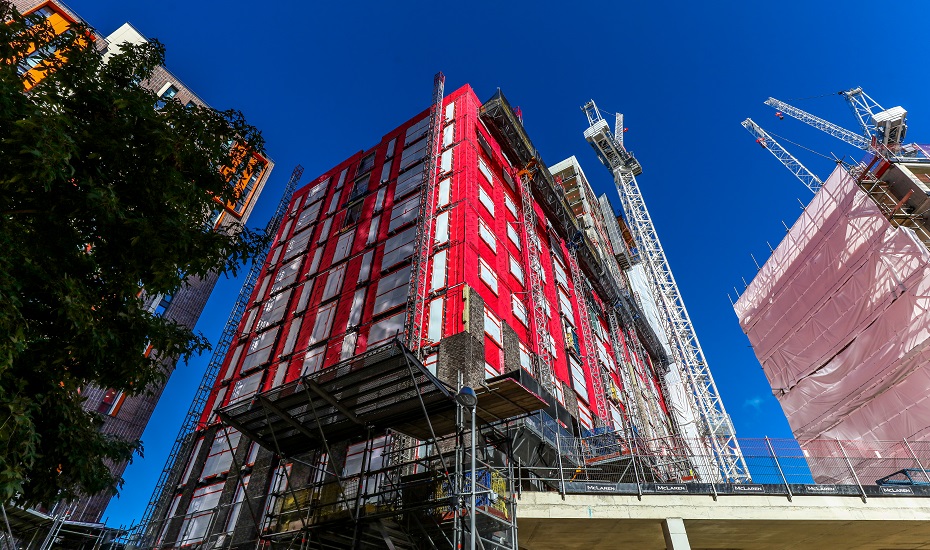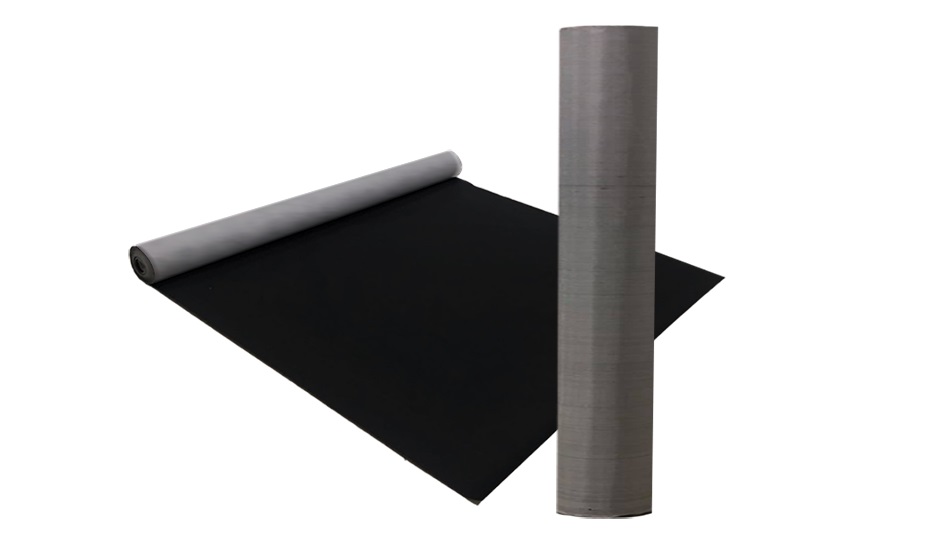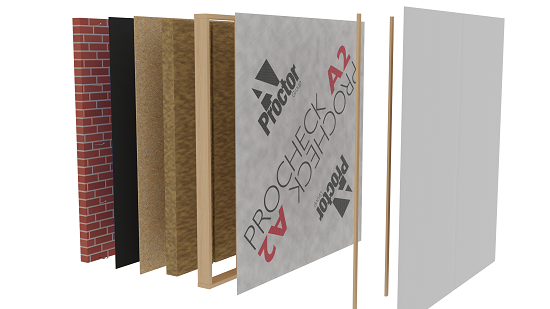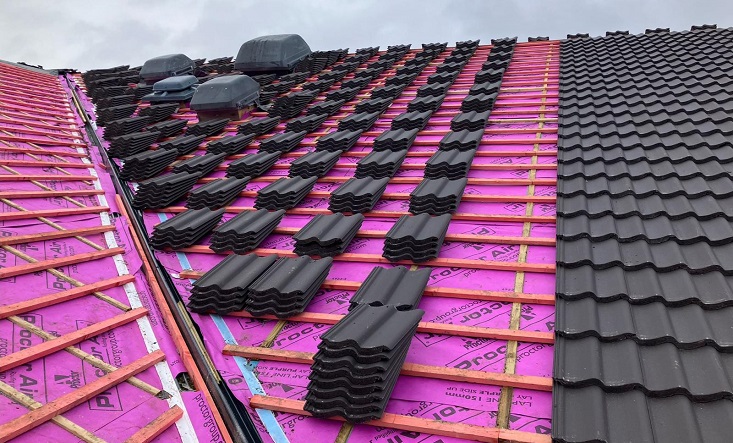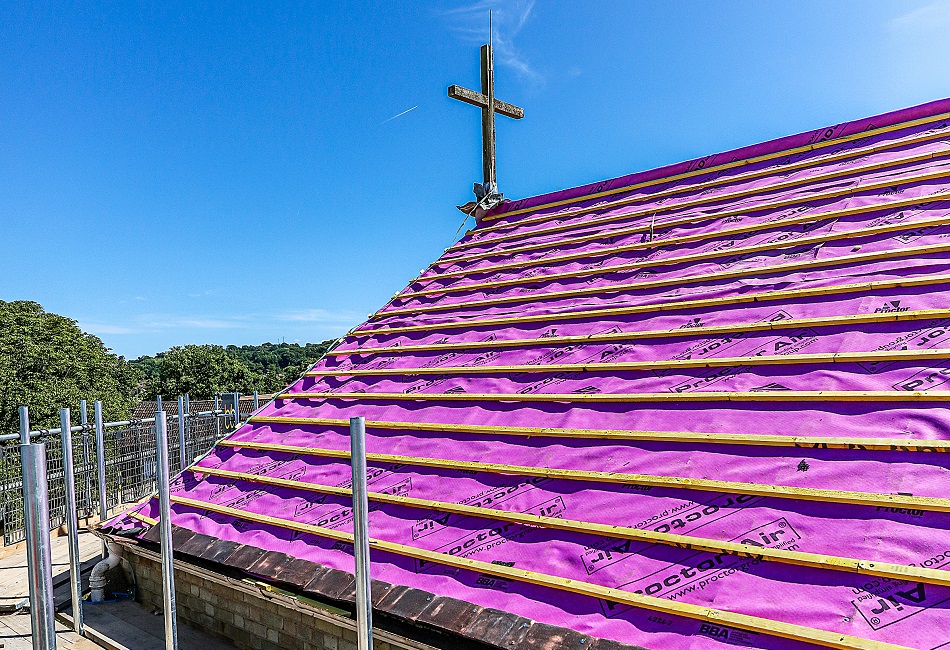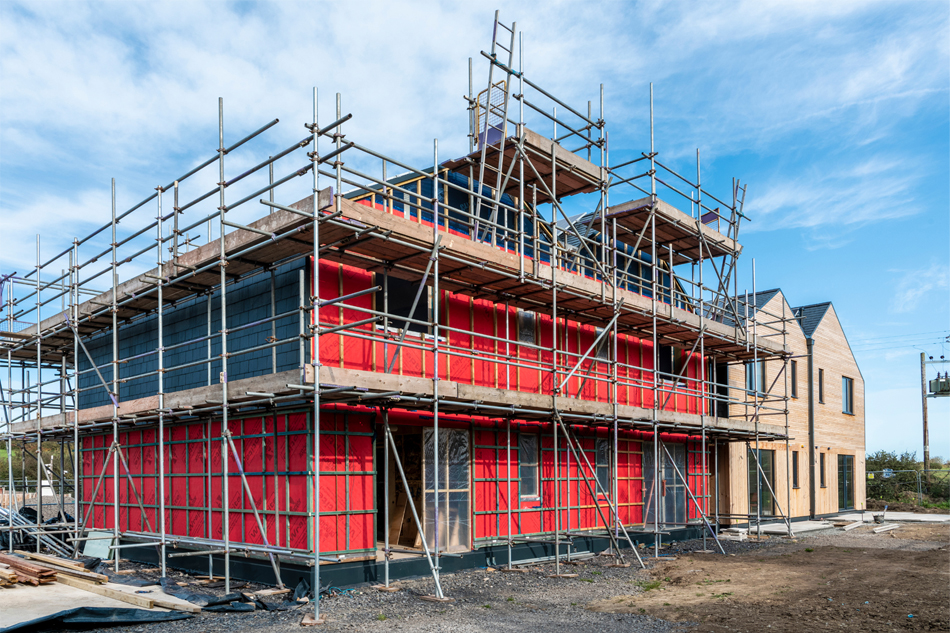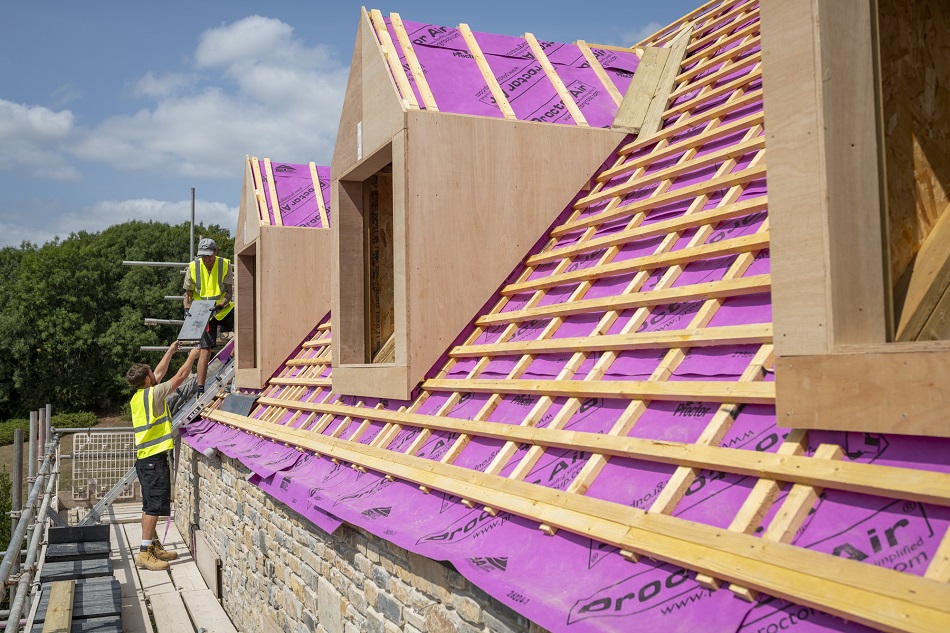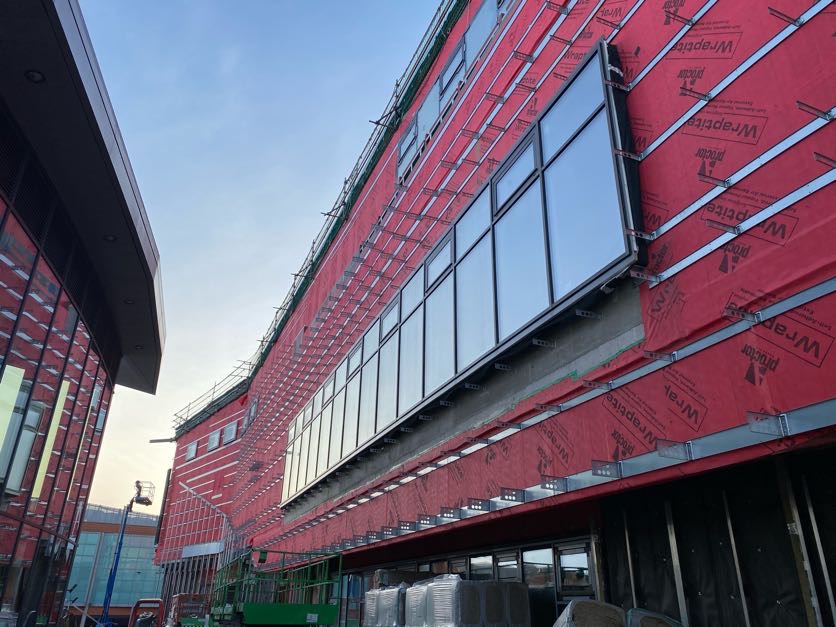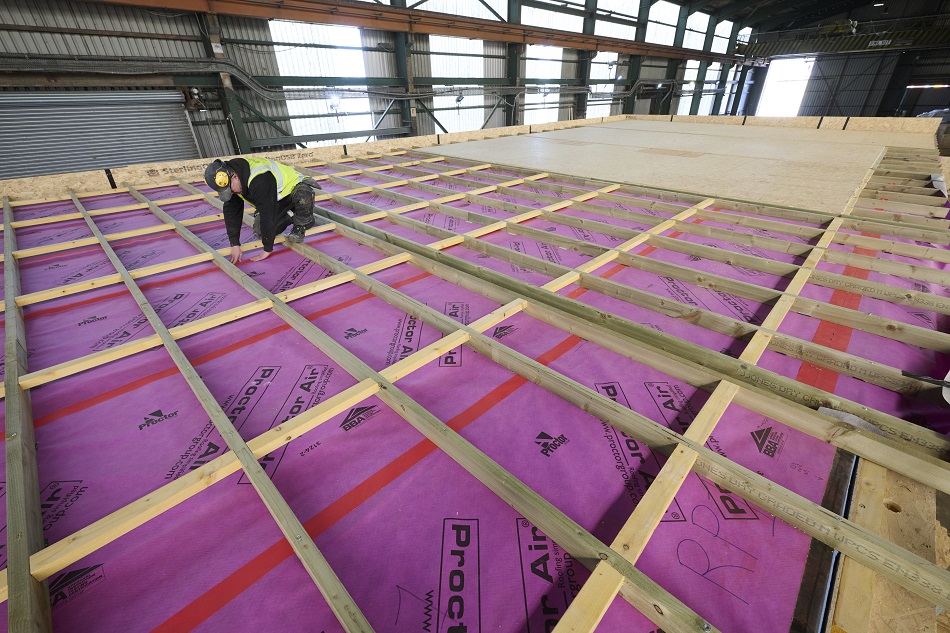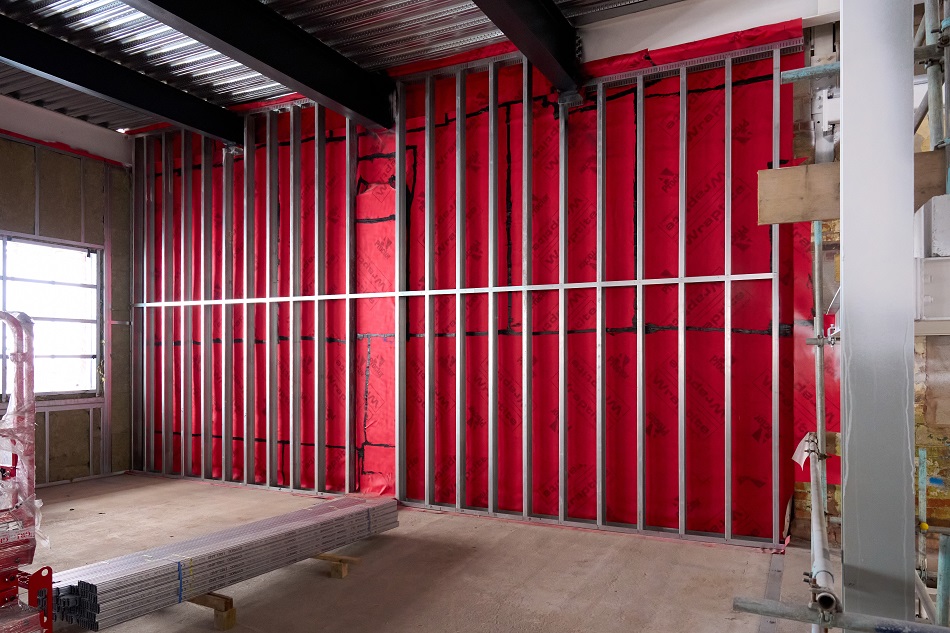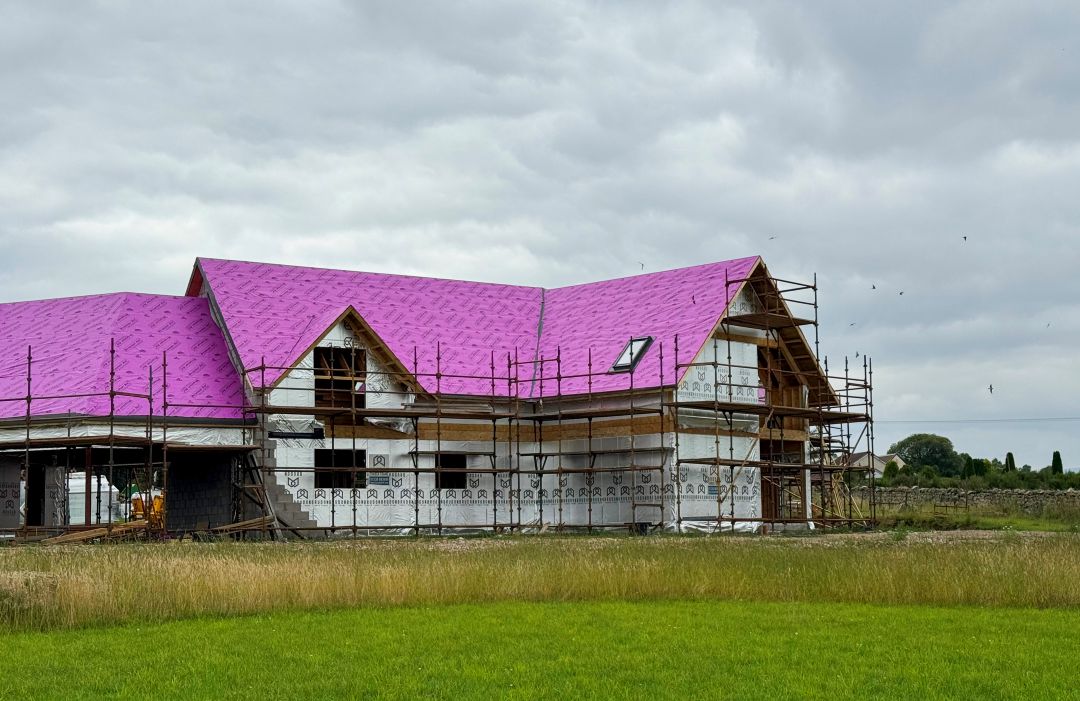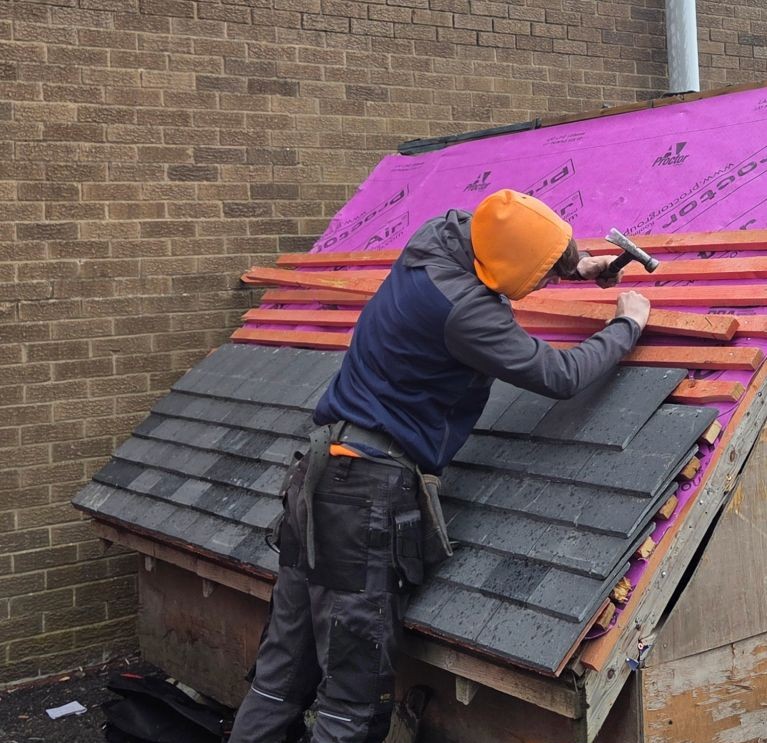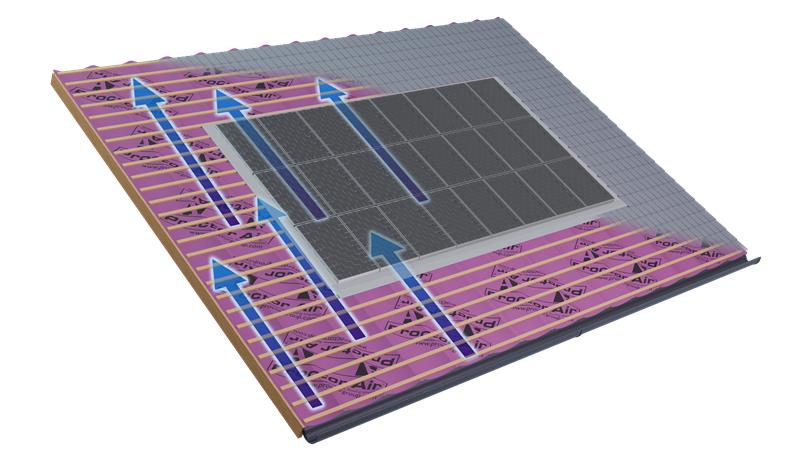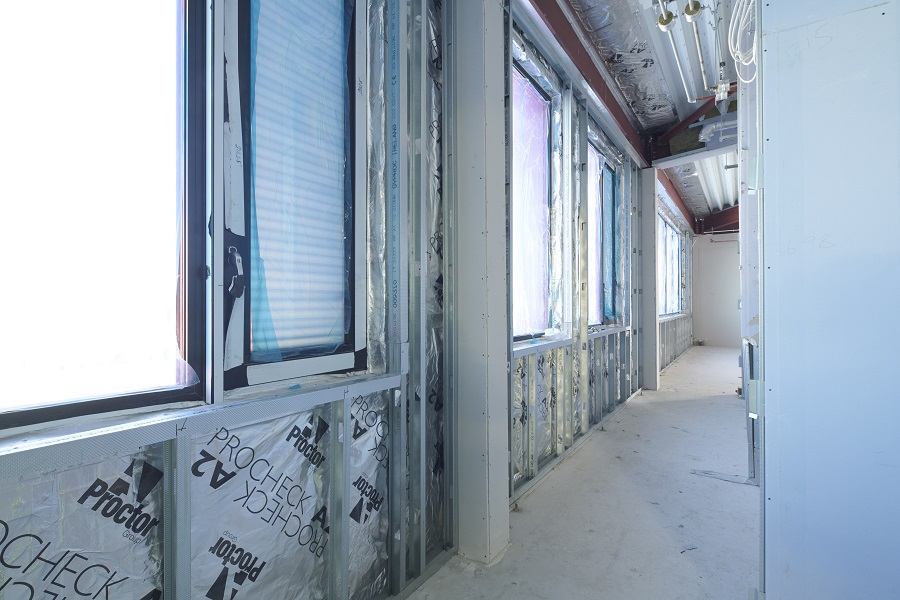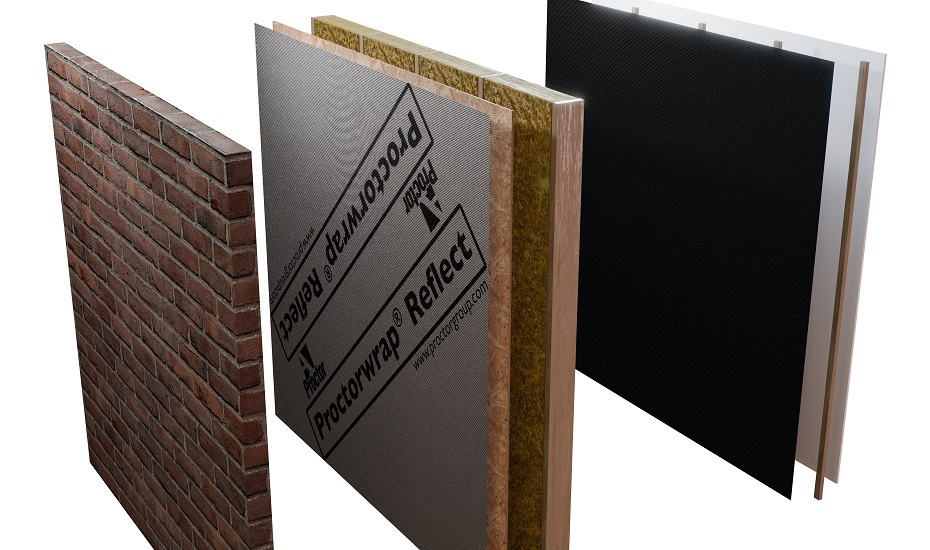Climate change resilience and performance gaps
Making our built environment more resilient to climate change means taking decisions on a building-by-building basis, but there are also wider issues to consider – like large scale planning for flooding, or the widespread ‘greening’ of mostly concrete urban spaces – that no single project can ever hope to tackle alone.
Not only that, but design decisions simply must translate to the building site and to the finished building. It’s common to talk about a performance gap in terms of energy efficiency, but our industry needs to think about performance gaps in terms of health, comfort and climate resilience too.
If issues with quality control are present on site then no amount of good intention by the designer/specifier will help occupants trying to cope with extreme weather in future.
More extreme rain
A warming climate means the atmosphere can hold more moisture – approximately 7% more for every 1°C rise in temperature. More moisture means heavier rainfall, with the increasing likelihood of it falling in a shorter space of time and over a smaller land area.
Managing rainfall and run-off has been an important element of building design for some time, especially in urban areas where buildings do not have generous areas of land around them. Adopting sustainable urban drainage systems (SUDS) – ways to control the rate at which water discharges from sites – helps to reduce the possibility of sewer systems being overwhelmed.
As part of that, flat roofs in cities are increasingly specified with green or blue roof systems. This is both for sustainability reasons (biodiverse roofs providing habitats for birds and insects, for example) and to serve as a ‘buffer’ by temporarily holding rainwater during heavy rainfall.
First and foremost, a building’s fabric serves to provide shelter for its occupants. Keeping water out buildings is essential, and membrane products often act as a secondary line of defence against weather conditions, behind facades or roof coverings.
Designing construction products for a changing climate
Extreme rain places an even greater onus on construction product performance. Membranes have to also be capable of offering some temporary protection during the construction process – especially with more unpredictable weather making sustained dry conditions harder to come by.
At the A.Proctor Group, we strive to make sure our products offer the highest standards of performance as a minimum. Our external airtightness membrane Wraptite® is classified W1 for water hold out, and recently demonstrated its credentials on the Glass Bottle development in Dublin, where it kept sustained heavy rain at bay before the facade had been installed.
Similarly, our pitched roof underlay Proctor Air is rated W1 and has a hydrophobic additive in all three of its layers, adding up to a hydrostatic head performance that exceeds the guidance of NFRC’s Technical Bulletin 6.
Hotter, longer heatwaves
It is just over two years since the recorded temperature in the UK exceeded 40°C for the first time. Climate change makes more hot and extreme hot weather more likely.
A 2022 report by the UK’s Climate Change Committee’s (CCC), Risks to health, wellbeing and productivity from overheating in buildings, laid out some of the statistics: every year from 2018 to 2021 featured a heatwave, with 2018 and 2022 sharing the record as the country’s joint hottest summers.
Cities generally are vulnerable, thanks to the heat island effect. London is particularly vulnerable, being also located in the south east. The report goes on to say: “Climate projections suggest that a ‘hot’ summer such as 2018 will become the average summer by 2050.”
As if to underline that point, the following year, 2023, featured the hottest June on record.
How can building fabric help in tackling overheating?
The risks from overheating are starting to be recognised, with new Building Regulation requirements having been introduced. Those requirements are limited in their scope, applying (for now at least) to new buildings only.
The preference is to control overheating through passive means wherever possible, since mechanical cooling is energy intensive and emits carbon as a result.
As well as helping to keep buildings warm in winter, good levels of insulation can also help them to stay cool in winter. Insulation alone is not the answer though. The same CCC report identified properties that are more energy efficient can actually be at greater risk of overheating – usually if energy efficiency measures have been installed poorly, and/or without adequate ventilation.
Just as good airtightness is important for stopping the leakage of warm air during cold weather, so it can also help to reduce warm air entering the property when trying to keep it cool. So here, again, a product like Wraptite® can be an important part of the solution.
In pitched roofs, the air permeability offered by Proctor Air can help to promote the passage of warm air out of loft spaces – especially overnight and early in the morning, when external temperatures are typically cooler. By stopping the temperature of the loft space building and building during hot weather, it can ease pressure on the rest of the property.
A holistic approach is needed
Whether talking about climate change causing more extreme rain or hotter weather, building fabric solutions alone will not make buildings – new or existing – resilient, healthy and comfortable. Holistic approaches are required and, within that wider context, choosing appropriate construction products can make a significant difference.
Request a Sample
Technical Advice
CAD Detail Review
U-Value Calculation
Book a CPD
Specification Check
